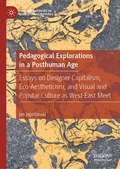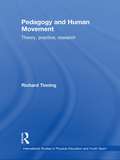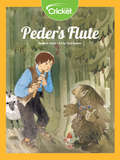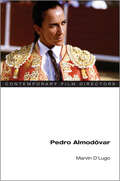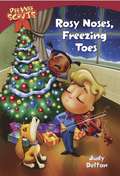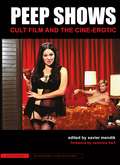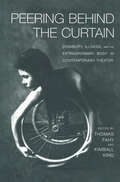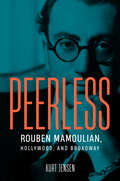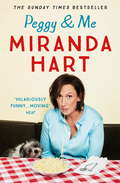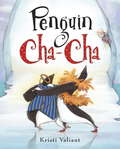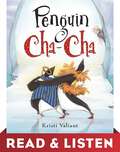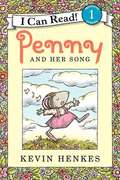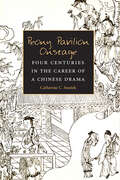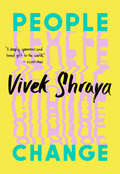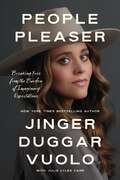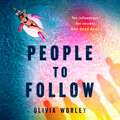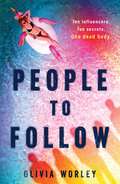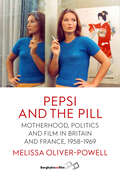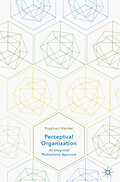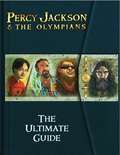- Table View
- List View
Pedagogical Explorations in a Posthuman Age: Essays on Designer Capitalism, Eco-Aestheticism, and Visual and Popular Culture as West-East Meet (Palgrave Studies in Educational Futures)
by jan jagodzinskiThis book problematizes the role of education in an increasingly mediatized world through the lenses of creativity, new media, and consumerism. At the core of the issue, the author argues, creativity in art education is being co-opted to serve the purposes of current economic trends towards designer capitalism. Using an East meets West approach, jagodzinski draws on Deleuze and Guattarian philosophy to explore visual and popular culture in Korean society, addressing the tensions that exist between designer education and art that explores the human condition. In doing so, he challenges art educators to envision a new paradigm for education which questions established media ontologies and incorporates new ways to confront the crisis of the Anthropocene.
Pedagogy and Human Movement: Theory, Practice, Research (Routledge Studies in Physical Education and Youth Sport)
by Richard TinningAcross the full range of human movement studies and their many sub-disciplines, established institutional practices and forms of pedagogy are used to (re)produce valued knowledge about human movement. Pedagogy and Human Movement explores this pedagogy in detail to reveal its applications and meanings within individual fields. This unique book examines the epistemological assumptions underlying each of these pedagogical systems, and their successes and limitations as ways of (re)producing knowledge related to physical activity, the body, and health. It also considers how the pedagogical discourses and devices employed influence the ways of thinking, practice, dispositions and identities of those who work in the fields of sport, exercise and other human movement fields. With a scope that includes physical education, exercise and sports science, sports sociology and cultural studies, kinesiology, health promotion, human performance and dance, amongst other subjects, Pedagogy and Human Movement is the most comprehensive study of pedagogical cultures in human movement currently available. It is an invaluable resource for anybody with an interest in human movement studies.
Peder's Flute
by Mark OlsonPeder works hard every day, taking care of his family’s farm with no help from his lazy brothers. He doesn’t mind, though—he gets to play his flute while he works. After his playing attracts the attention of a wealthy troll king, his brothers become jealous of the rewards the king offers to him. They hatch a plan to collect Peder’s reward for themselves. Will the king see through their ploy?
Pedro Almodóvar (Contemporary Film Directors)
by Marvin D'LugoPerhaps the best-known Spanish filmmaker to international audiences, Pedro Almodóvar gained the widespread attention of English-speaking critics and fans with the Oscar-nominated Women on the Verge of a Nervous Breakdown and the celebrated dark comedy Tie Me Up! Tie Me Down!. Marvin D'Lugo offers a concise, informed, and insightful commentary on a preeminent force in modern cinema. D'Lugo follows Almodóvar's career chronologically, tracing the director's works and their increasing complexity in terms of theme and the Spanish film tradition. Drawing on a wide range of critical sources, D'Lugo explores Almodóvar's use of melodrama and Hollywood genre film, his self-invention as a filmmaker, and his on-screen sexual politics. D'Lugo also discusses what he calls "geocultural positioning," that is, Almodóvar's paradoxical ability to use his marginal positions—in terms of his class, geographical origin, and identity—to develop an expressive language that is emotionally recognizable by audiences worldwide. Two fascinating interviews with the director round out the volume. An exciting consideration of an arthouse giant, Pedro Almodóvar mixes original interpretations into an analysis sure to reward film students and specialists alike.
Pee Wee Scouts: Rosy Noses, Freezing Toes (Pee Wee Scouts)
by Judy Delton illustrated by Alan TiegreenJINGLE BELL ROCK Stars? The Scouts are having a holiday party to show off their musical talents. Molly plans to sing “Rudolph the Red-Nosed Reindeer. ” And Rachel wants to perform Hanukkah songs on the piano. But notallthe Scouts are ready for the concert. Sonny hates the violin so much, he’d rather run away from home than play it! He disappears, and the Pee Wees have to work together to find their friend. Can they bring Sonny home for the holidays?
Peep Shows: Cult Film and the Cine-Erotic
by Xavier MendikExpanding on recent work in gender, cultural, and audience-based studies, Peep Shows: Cult Film and the Cine-Erotic examines the global traditions of cult erotica, explaining key patterns, paradigms, and performers from the world of cult celluloid sexuality.
Peep Shows: Cult Film and the Cine-Erotic (AlterImage)
by Xavier MendikFrom mediations on explicit imagery and profiles of prominent performers to discussions of national nudities and the titillating thrills of new technologies, cine-erotica has become a significant and subversive category of contemporary film, media, and cultural studies. Expanding on recent work in gender, cultural, and audience-based studies, Peep Shows: Cult Film and the Cine-Erotic examines the global traditions of cult erotica, explaining key patterns, paradigms, and performers from the world of cult celluloid sexuality. Peep Shows includes profiles of porn performers and icons such as Ron Jeremy, Betty Page, Catherine Breillat, and Joe D'Amato. Essays also provides case studies of contemporary porn parodies, lesbian erotica, Japanese Pink porn cinema, Café Flesh, the Seduction cinema label, the dominatrix in erotic cinema, female porn viewers, burlesque cinema programming, and porno chic soundtracks. The volume features exclusive interviews with erotic performers Seka, Buck Angel, Misty Mundae, Christina 'Thriller' Lindberg, and the prolific porn producer, Michael L. Raso.* Cover image from VIVA © 2007 by Anna Biller
Peering Behind the Curtain: Disability, Illness, and the Extraordinary Body in Contemporary Theatre (Studies in Modern Drama #18)
by Thomas Fahy Kimball KingFirst Published in 2002. Routledge is an imprint of Taylor & Francis, an informa company.
Peerless: Rouben Mamoulian, Hollywood, and Broadway (Wisconsin Film Studies)
by Kurt JensenA proud Armenian who claimed a distant link to nobility, born in what was then part of czarist Russia, Rouben Mamoulian (1897–1987) was one of the most astonishing and confounding figures in American film and theater, directing the original stage productions of Porgy and Bess, Carousel, and Oklahoma!, as well as films including Love Me Tonight, Queen Christina, City Streets, and Silk Stockings. He was famously fired from the film version of Porgy and Bess in a dispute over publicity and quit Cleopatra after arguments over a single scene. Mamoulian’s mercurial confidence and autocratic tendencies were among the reasons he had a reputation for being uncompromising. This frustrating mix of genius and stubbornness, of critical successes and financial flops, has proven challenging for biographers. Kurt Jensen’s magisterial volume, extensively researched and filled with trenchant observations, brings to life this charming, flawed, and fascinating man—and demonstrates how the wellspring of his art contained the seeds of his own destruction. Drawing upon Mamoulian’s unfinished memoir and voluminous diaries, as well as interviews with the director’s surviving collaborators, Jensen delivers fresh and informative insider stories from seminal productions. Meanwhile, he explores Mamoulian’s aesthetic principles and strategies as manifested in lighting, choreography, and sound design. A tour de force, Peerless offers readers a multifaceted, in-depth look at an idiosyncratic genius.
Peggy and Me: The heart-warming bestselling tale of Miranda and her beloved dog
by Miranda HartThe hilarious and heartwarming memoir of Miranda and her life changing dog, the inimitable and most lovable Peggy.Hello dear book browser and welcome to Peggy and Me. The story of my life since getting a beautiful Shih-Tzu Bichon Frise cross puppy (I call the breed a Shitty Frise - fun) in the form of Peggy.Some of you may be thinking: "a book about a dog, how totally brilliant, I need hear no more, I'm sold." In which case we should be best friends and go out to tea together, every day.Others of you may be thinking: "a book about a dog, how totally mad, she must have officially lost it." In which case I completely understand. For I once viewed dog owners with much suspicion. The way they obsessively talk about their dogs often using voices for them to reply; the way they have a light covering of dog hair all over their clothes and sofas; and worse, an alarming comfort and ease around excrement. But I now get why people become so mad about their hounds. It wasn't instant love I have to admit. Getting a puppy when I was at a low ebb in my life wasn't easy - there was a lot of challenging, what I call, dog administration (dog-min), and the humiliating first trip to the vet still haunts me. It's been a bumpy old road, but Peggy has been lovingly by my side through some life changing moments and I wouldn't have coped without her. Most surprisingly she has taught me a huge amount - not how to get an old pie packet out of a bin and lick it (I could already do that), but real lessons about life and love and trust and friendship. Put aside any doggy reservations and come walkies with Peggy and me...
Peggy and Me: The heart-warming bestselling tale of Miranda and her beloved dog
by Miranda HartFROM NATIONAL TREASURE and star and creator of the award-winning BBC sitcom Miranda, comes Miranda Hart's heart-warming and hilarious account of life with her beloved dog Peggy, a gorgeous white bichon frise.'Hilariously funny and often moving memoir ... we loved every word *****' Heat'Open, honest ... her misadventures are hilariously described ... charming and funny' Daily Express* * * * * * * * * * * * * * * *Hello dear book browser and welcome to Peggy & Me, the story of my life since getting a beautiful Shih-Tzu Bichon Frise cross puppy (I call the breed a Shitty Frise - fun) in the form of Peggy.Some of you may be thinking: "a book about a dog, how totally brilliant, I need hear no more, I'm sold." In which case we should be best friends and go out to tea together, every day.Others of you may be thinking: "a book about a dog, how totally mad, she must have officially lost it." In which case I completely understand. For I once viewed dog owners with much suspicion. The way they obsessively talk about their dogs often using voices for them to reply; the way they have a light covering of dog hair all over their clothes and sofas; and worse, an alarming comfort and ease around excrement. But I now get why people become so mad about their hounds. It wasn't instant love I have to admit. Getting a puppy when I was at a low ebb in my life wasn't easy - there was a lot of challenging, what I call, dog administration (dog-min), and the humiliating first trip to the vet still haunts me. It's been a bumpy old road, but Peggy has been lovingly by my side through some life-changing moments and I wouldn't have coped without her. Most surprisingly she has taught me a huge amount - not how to get an old pie packet out of a bin and lick it (I could already do that), but real lessons about life and love and trust and friendship. Put aside any doggy reservations and come walkies with Peggy and me ...
Peggy and Me: The heart-warming bestselling tale of Miranda and her beloved dog
by Miranda HartThe hilarious and heartwarming account of Miranda and her life changing dog, the inimitable and most lovable Peggy.Hello dear audiobook browser and welcome to Peggy and Me. The story of my life since getting a beautiful Shih-Tzu Bichon Frise cross puppy (I call the breed a Shitty Frise - fun) in the form of Peggy.Some of you may be thinking: "a book about a dog, how totally brilliant, I need hear no more, I'm sold." In which case we should be best friends and go out to tea together, every day.Others of you may be thinking: "a book about a dog, how totally mad, she must have officially lost it." In which case I completely understand. For I once viewed dog owners with much suspicion. The way they obsessively talk about their dogs often using voices for them to reply; the way they have a light covering of dog hair all over their clothes and sofas; and worse, an alarming comfort and ease around excrement. But I now get why people become so mad about their hounds. It wasn't instant love I have to admit. Getting a puppy when I was at a low ebb in my life wasn't easy - there was a lot of challenging, what I call, dog administration (dog-min), and the humiliating first trip to the vet still haunts me. It's been a bumpy old road, but Peggy has been lovingly by my side through some life changing moments and I wouldn't have coped without her. Most surprisingly she has taught me a huge amount - not how to get an old pie packet out of a bin and lick it (I could already do that), but real lessons about life and love and trust and friendship. Put aside any doggy reservations and come walkies with Peggy and me...(P) 2016 Hodder & Stoughton
Penguin Cha-Cha
by Kristi ValiantFollow a determined girl named Julia as she tries to join in the fun of a mischevious group of dancing penguins. <P><P>Set in The Romping Chomping Park and Zoo, author/illustrator Kristi Valiant creates a vibrant, funny, and spirited picture book that will leave young readers shaking their very own tail feathers.
Penguin Cha-Cha: Read & Listen Edition
by Kristi ValiantFollow a determined girl named Julia as she tries to join in the fun of a mischevious group of dancing penguins. Set in The Rompin' Trompin' Park and Zoo, author/illustrator Kristi Valiant creates a vibrant, funny, and spirited picture book that will leave young readers shaking their very own tail feathers.
Pennington's Heir (Pennington #3)
by K. M. PeytonGetting out of prison was like being born again, said Patrick Pennington. His adoring girl friend, seventeen-year-old Ruth Hollis, was waiting for him. Professor Hampton, Pat's piano teacher, had waited, too, for his impetuous star pupil to get out and get back to his music again. Now it looked like a sure, straight road to success, if Pat could just keep himself out of trouble and stick with his studies. But trouble and Pat Pennington have an affinity for each other. When Ruth tells him she is going to have his baby, Pat must face a new kind of problem--one that threatens both his personal happiness and his future as a concert pianist. Patrick Pennington, the rebellious and talented anti-hero of Pennington's Last Term and The Beethoven Medal, doesn't settle easily into the role of husband, father, and breadwinner. With humor, compassion, and deep insight, K. M. Peyton portrays a very young, very loving couple's rocky first year of marriage.
Penny And Her Song (I Can Read Level 1 Series)
by Kevin HenkesWhen Penny comes home from school, she is ready to sing her song. But the babies are sleeping, and Mama and Papa are worried that Penny will wake them up. Oh, but it is a good song, a really wonderful song . . . and Penny wants more than anything to sing it. What do you think will happen?
Penny Penguin (Raffi Songs to Read)
by RaffiMarch, hop, slip, and slide through a winter wonderland in this adorable sing-along book from beloved children&’s musician and performer Raffi.Put on your penguin suit and waddle along with Penny Penguin and her penguin pals as they spend a day in the snow together!With rhythm, rhyme, and repetition, Raffi&’s catchy song is perfect for encouraging movement and building speech and listening skills. Irresistibly cute illustrations from Dan Tavis make this the perfect book for entertaining and early learning.
Peony Pavilion Onstage: Four Centuries in the Career of a Chinese Drama (Michigan Monographs In Chinese Studies #88)
by Catherine SwatekAfter its completion in 1598, The Peony Pavilion (Mudan ting) began a four-hundred-year course of transmission and dissemination in China and around the world. Within China, the play’s wide popularity propelled its appearance in numerous editions, adaptations, and libretti. Performances ranged from “pure singing” at private gatherings to full stagings in commercial theaters. As the crown jewel of Kun opera reportoire, Mudan ting has a richly documented history and lends itself to careful study. In the late twentieth century, however, classical Kun opera is on the verge of extinction in China, and creative talent is gravitating to centers outside China’s mainland. In 1998, the play was reintroduced to audiences in Europe and North America in various versions, adding new chapters to the story of the work. Peony Pavilion Onstage examines Tang Xianzu’s classic play from three distinct viewpoints: public-literati playwrights; professional performers of Kun opera; and quite recently, directors and audiences outside China. Catherine Swatek first examines two adaptations of the play by Tang's contemporaries, which point to the unconventionality of the original work. She goes on to explore how the play has been changed in later adaptations, up to its most recent productions by Peter Sellars and Chen Shi-Zheng in the United States and Europe. Peony Pavilion Onstage is essential reading for scholars and performers of this masterpiece and other great works of Chinese drama.
People Change
by Vivek Shraya"A deeply generous and honest gift to the world."--Elliot Page The author of I&’m Afraid of Men lets readers in on the secrets to a life of reinvention. Vivek Shraya knows this to be true: people change. We change our haircuts and our outfits and our minds. We change names, titles, labels. We attempt to blend in or to stand out. We outgrow relationships, we abandon dreams for new ones, we start fresh. We seize control of our stories. We make resolutions. In fact, nobody knows this better than Vivek, who&’s made a career of embracing many roles: artist, performer, musician, writer, model, teacher. In People Change, she reflects on the origins of this impulse, tracing it to childhood influences from Hinduism to Madonna. What emerges is a meditation on change itself: why we fear it, why we&’re drawn to it, what motivates us to change, and what traps us in place. At a time when we&’re especially contemplating who we want to be, this slim and stylish handbook is an essential companion—a guide to celebrating our many selves and the inspiration to discover who we&’ll become next.
People Pleaser: Breaking Free from the Burden of Imaginary Expectations
by Jinger VuoloAre you a people pleaser? Can you even begin to measure how the approval of others has shaped your heart and mind? Your faith and relationships? Your habits and identity? In People Pleaser, New York Times bestselling author Jinger Vuolo shares her personal journey of constantly seeking approval from others and how she found her true identity.From childhood to early adulthood, Jinger Duggar Vuolo followed the expectations of others, never taking the time to discover who she truly was. It wasn't until she asked herself the question, "Who am I?" that she realized she was a people pleaser. This realization led her on a journey of self-discovery and ultimately, to rely on God for her approval and sense of self-worth.Through her faith and reliance on God, Jinger began to break free from the need for approval and discover true freedom. This book is a guide for anyone struggling with people-pleasing tendencies and seeking to find their true identity and purpose in life. Learn how to:discover the beauty of community and how we were made to enjoy others,identify sin and how it can hinder your ability to be in community with one another,diagnose yourself with ruthless honesty but without judgement, andunderstand who you are in God's eyes. Jinger hopes this book will inspire others to embark on a similar journey towards freedom.
People to Follow: A Gripping Social-Media Thriller
by Olivia WorleyTen influencers. Ten secrets. One dead body. A pacy, addictive thriller perfect for fans of We Were Liars, The Inheritance Games and One Of Us Is Lying.'Agatha Christie meets TikTok . . . a wicked, juicy page-turner' - Alexa Donne, author of Brightly BurningThey're used to being followed. But not like this . . .Ten social media stars think they're about to join the cast of a hot new reality show.But the production crew never shows up, and the influencers find themselves stranded on a deserted Caribbean island with no contact with the outside world - except for messages from the mysterious 'Sponsor', who is threatening to expose their darkest secrets.When one of them winds up dead, things start to get more real than they bargained for . . .With the body count rising, the influencers must figure out who is trying to get them cancelled - like, literally - before their number one follower strikes again.
People to Follow: A Gripping Social-Media Thriller
by Olivia WorleyTen influencers. Ten secrets. One dead body. A pacy, page-turning thriller perfect for fans of We Were Liars, The Inheritance Games and One Of Us Is Lying.'Agatha Christie meets TikTok . . . a wicked, juicy page-turner' - Alexa Donne, author of Brightly BurningThey're used to being followed. But not like this . . . Ten social media stars think they're about to join the cast of a hot new reality show. But the production crew never shows up, and the influencers find themselves stranded on a deserted Caribbean island with no contact with the outside world - except for messages from the mysterious 'Sponsor', who is threatening to expose their darkest secrets. When one of them winds up dead, things start to get more real than they bargained for . . .With the body count rising, the influencers must figure out who is trying to get them cancelled - like, literally - before their number one follower strikes again.
Pepsi and the Pill: Motherhood, Politics and Film in Britain and France, 1958–1969
by Melissa Oliver-PowellThe 1960s was a decade of massive political and cultural change in Western Europe, as seismic shifts took place in in attitudes towards sexuality, gender, and motherhood in everyday life. Through case studies of British and French films, Pepsi and the Pill offers a fresh vision of a pivotal moment in European culture, exploring the many ways in which political activity and celebrated film movements mutually shaped each other in their views on gender, sexuality, and domesticity. As the specter of popular nationalism once again looms across Europe, this book offers a timely account of the legacy of crucial debates over issues including reproductive rights, migration, and reproductive nationalism at the intersection of political discourse, protest, and film.
Perceptual Organization: An Integrated Multisensory Approach
by Stephen HandelThis textbook goes beyond introductory sensory perception by incorporating supplementary electronic materials to demonstrate the parallels between both hearing and seeing. Each chapter intermixes seeing and hearing processes so that students can easily understand that perceptual organization is the same across different kinds of sensations and modalities. Figures illustrating visual organization are paired with sound files demonstrating the analogous auditory organization. While most books on sensation and/or perception treat the senses individually there is growing awareness of just how important multisensory integration is to understanding the connection between sensory perception and cognition.
Percy Jackson & the Olympians: The Ultimate Guide
by Mary-Jane KnightPercy Jackson and the Olympians: The Ultimate Guide is the third companion book to the Percy Jackson and the Olympians by Rick Riordan.
